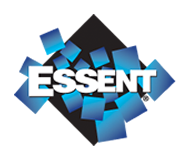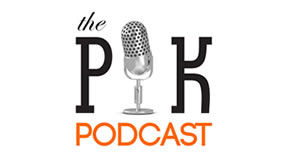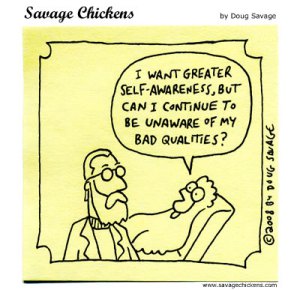 Not surprisingly, Amazon is looking to extend its reach into the $8 Trillion B2B wholesale market. Their B2B site, amazonsupply.com, already boasts 2.2 million SKUs and they are on a hiring tear to help them in their quest to “rebuild civilization.”
Not surprisingly, Amazon is looking to extend its reach into the $8 Trillion B2B wholesale market. Their B2B site, amazonsupply.com, already boasts 2.2 million SKUs and they are on a hiring tear to help them in their quest to “rebuild civilization.”
My good friends, Danny Rosin and Robert Fiveash of BrandFuel, talk of a doomsday scenario where they wake up one day and learn that the biggest suppliers in the industry have just started selling direct. They call it “Supplier Monday” and it’s when all of the normal rules about the promotional products industry change.
We may be in store for “Amazon Monday” at some point in the near future. I spent some time taking a look at what this might look like and whether it actually spells the end of the industry as we know or whether it gives us an opportunity to challenge Amazon head on.
Let’s start by taking a look at the pricing comparisons on some basic commodities in our industry. I am using the Gildan 2300 Tshirt and the Gildan 18600 Hooded Sweatshirt as examples.
Hooded Sweatshirt (Sport Gray, S-XL)
Amazon $19.47
Leading Wearables Supplier $12.49
Tshirt (Sport Gray, S-XL)
Amazon $9.56
Leading Wearables Supplier $3.96
Amazon is 141% more expensive for the Tshirt and 56% more expensive for the hooded sweatshirt (at the time of this writing, June 23, 2014). And you are only able to order 100 units maximum. This seems like a surprisingly uncompetitive start for a company whose founder, Jeff Bezos, has said “your margin is my opportunity.”
While Amazon Supply doesn’t look like much of a threat at the moment, I wonder what a competitively priced Amazon would look like for our industry. Here are some of my thoughts:
1. Amazon would likely target the blank business first as warehousing and shipping product is what they do best. Granted they also print books on demand in their Kindle division, but from a product perspective, Amazon is currently optimized to ship blank product that sits on their shelves.
The wearables segment in our industry represents about 45% of the $18BN in annual promotional products sales. If you break down that figure, the margin that Jeff Bezos sees as his opportunity is split between (i) the manufacturer (i.e Gildan) (ii) the wholesaler (ie. SanMar, Alpha Broder, Bodek) (iii) the decorator and (iv) the distributor.
In my opinion, the easiest target for Amazon is the blank clothing wholesaler like SanMar, Alpha Broder, Bodek etc. Amazon could deal directly with mills like Gildan, Fruit of the Loom, American Apparel, etc and sway them with massive volume commitments. Given their focus on selling at the lowest price, Amazon could conceivably win the distributors’ business by offering the lowest price and the quickest service on these commodities (two key reasons why distributors buy Tshirts). Amazon has a bigger warehouse network than any wholesaler in the industry and they’re starting to pilot same day service in major markets as we speak (with drone service coming in a few years if things go Bezos’s way).
If Amazon can create a wholesale site that’s as easy to use as amazon.com, then this could conceivably work. It worked for destroying the book store 10 years ago, so there’s no reason it couldn’t work in the wholesale market.
2. I believe that blank product wholesalers have more to lose in an Amazon world. Wholesalers sell commodities while distributors and decorators sell something more individualized on account of the program design and embellishment services they offer. A distributor/decorator lives in a fussy world where decoration, creative services and brand development are at the core of their model. These services are harder to replicate online than selling a blank Tshirt. To be sure, there are several web retailers like branders.com, 4imprint.com, etc that help a customer to customize their Tshirt and mug online, but my central point is that Amazon Supply would be more apt to focus on quick and easy to turn blank merchandise (at least in the short term).
3. I don’t believe that distributors would get off that easy in an Amazon world though. Amazon does not care about the structure of our industry. They’ll sell to anyone with a pulse and a valid credit card. This means that it’ll be easier than ever for end clients to buy blank promotional goods from Amazon and manage decoration themselves. While I will argue that it’s not that hard for an end user to buy direct from mills today (American Apparel makes wholesale accounts available to anyone), very few have the marketing and distribution power of Amazon.
This means that only the very best distributors will come out ahead in an “Amazon as your supplier and competitor world.” A distributor that offers hard to replicate services like program design, branding, web design, company stores and embellishment services will stand a much better chance.
Someone once told me that in the “absence of value, the only thing you can compete on is price.” I believe this mantra has always applied to the promotional products industry. You see it every day in this industry, be it a distributor beating up a supplier on price or an end user relentlessly shopping multiple distributors. This is the world that Amazon thrives in. If value is nebulous, then why would you buy from anyone other than a company that can ship you goods overnight (or same day) at the lowest possible price?
Of course, the very best distributors and suppliers in the industry have already armed themselves against a possible incursion by Amazon. Examples include: deep inventory programs, embellishment services, deep understanding of end user’s marketing objectives, customer service and field sales teams. In addition to this, I believe that suppliers and distributors who truly collaborate and share information with one another will always be two steps ahead of Amazon and their low cost model.
If this is a rallying cry for the industry to get its act together, then so be it. While we have a lot to be proud of, I also worry about the increasingly lazy approach that some suppliers take with distributors when it comes to offering truly great ideas. Equally, I worry about distributors that fail to bring their suppliers into their businesses and treat them like genuine partners. This is nothing to say of the end user who’s left to buy promotional products out of a catalog foisted upon them by a reactive distributor.
When neither side adds value, the system breaks down which makes this $18 Billion industry vulnerable to attack by more innovative outside forces. I think we have it in us to prevent Amazon Monday.
Mark Graham, @heymarkgraham
 Kirby Hasseman is the owner of Hasseman Marketing and Communications and the author of multiple business books including his latest, Delivering Marketing Joy: Using Promo To Grow Your Business The Right Way. A compelling content creator with over fifteen years experience, Kirby hails from the birthplace of the promotional products industry (listen to hear the story!) and is growing his distributorship into a dynamic creative agency that believes strongly in a service-over-sales model. Tune in to learn how you can grow your business the right way with Kirby Hasseman!
Kirby Hasseman is the owner of Hasseman Marketing and Communications and the author of multiple business books including his latest, Delivering Marketing Joy: Using Promo To Grow Your Business The Right Way. A compelling content creator with over fifteen years experience, Kirby hails from the birthplace of the promotional products industry (listen to hear the story!) and is growing his distributorship into a dynamic creative agency that believes strongly in a service-over-sales model. Tune in to learn how you can grow your business the right way with Kirby Hasseman!











